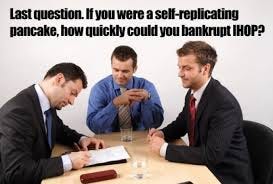Case-Based Prep for Consulting Roles #3
Introduction to Framework Number 2: A Proper Process. P.S: The case discussed was asked to me in a Round 2 Interview.
19/01/23
In this article, we will discuss our second framework, i.e “A Proper Process” framework. I find this framework very helpful whenever the case focuses on an overall process, especially in logistics, manufacturing, supply chain, etc. You have to divide the whole process into a set of actions and evaluate each one of them individually. All actions are mutually exclusive and they combine to form a collectively exhaustive process. I hope that you derive value from the framework as well.
The given image is an example of the same:
Example Case: The interviewer picked up a mineral water bottle and said that this bottle costs the client 5 Rs, and the client has approached to reduce the cost to 4 Rs. How would you go about the same?
Solution:
We can refer to the above value chain model and identify that the bottle requires raw materials, requires processing, requires distribution, requires marketing, requires after-sales services.
We then explain what each of these components includes, we explain that the bottle requires 2 major raw materials, i.e plastic from packaging and water. The processing requires treating water and giving the plastic bottle the proper shape, putting our label, and packaging the water.
The distribution includes warehouses, wholesellers, distributors, and retailers. Each middleman includes a margin, requires space to store, and also requires logistics.
The marketing component would be divided into B2B marketing and B2C marketing. B2B marketing for having more events, stores, and businesses use this bottle. B2C marketing for having people know and trust the brand.
The after-sales component of this business would be minimal, but with the recent rules of plastic recycling where the company is supposed to collect all the plastic that they produce, we might have to spend some amount on collecting used bottles.
The key insight that I identified early on was that this is a small bottle and would be used by regular people. This would either be bought by people when they visit a grocery store or would be made available during events like a business conference or a marathon. Due to this type of customer base, we don’t need such an elaborate distribution, a direct relationship with the retailers can be established by an on-ground sales team.
I believe that if we reduce the complications in the distribution supply chain, we could reduce costs by around 15-20%. I asked the interviewer for some data regarding the same. The interviewer did not have the exact data I was requesting but justified that he was looking to understand my thinking and logic.
Thus we could solve the case by breaking the supply chain and carefully evaluating each component.
This framework is not only limited to supply chain-related cases.
Example Case 2: A cake shop in Andheri has seen a drop in sales from their offline channel for a month now. Try to find out the root cause of the same.
Solution:
We need to dissect the customer journey from their motivation to buy a cake to them buying a cake. This process has the following actions: Motivation to buy a cake, choosing this shop, coming to the shop, choosing a cake, making payment, and buying the cake.
Each action can be evaluated and we can check with the client if they have made any chance that resulted in that action not happening less frequently.
For example, has there been a decrease in marketing or has the location of the cake shop changed or has the number of options for cake reduced, or have we changed our payment methods, etc?
In this particular case, we ended up finding that due to construction activities, the road in front of the street has been dug up, which leads to no parking space and also makes the shop less accessible to the public.
Tip of the day:
When you solve a case, you might feel tempted to ask for numbers directly, instead of that use a basis to guess the number and then confirm the same with the interviewer. Example: I have no clue about the population of Dubai, but I do know that it’s a city covered mainly in a desert. Thus guessing that it would have 1/4th the population of Mumbai is a good guess.
Recommendation of the day:
This blog covers topics like What is a case interview, what interviews look for in a case interview, how to practice case interviews, etc.
https://caseinterview.com/case-interview
Closing Thoughts:
Thanks a lot for giving this article a read. Do reach out to me in case you have any doubts or need any help.
Would love to hear your thoughts on this framework!!







